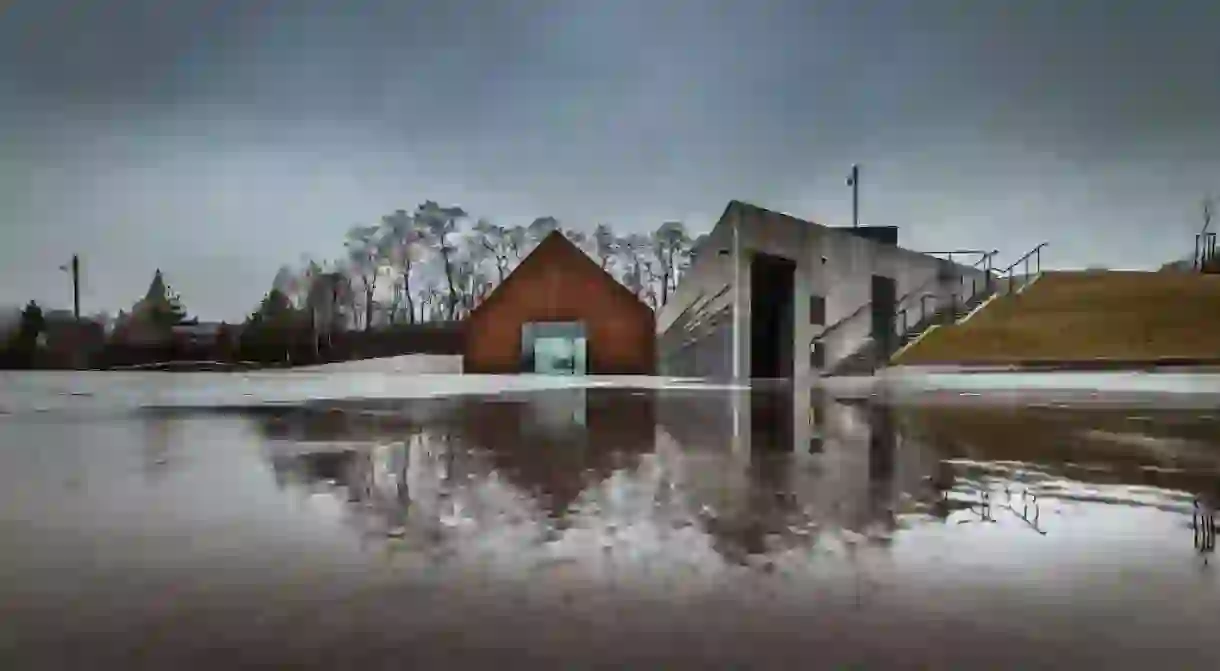Inside The Museum Honoring Poles Who Saved Jews

On 17 March 2016, the village of Markowa, Poland, witnessed the opening of a new museum, solely dedicated to the remembrance of the defiant Poles who hid Jewish families during the Holocaust. In the name of the Ulma family, who sheltered Jews in 1944, president Andrzej Duda of Poland opened the The Ulma Family Museum of Poles Saving Jews on the site where the Ulma family was murdered.

Although paying respect to all those harboring Jewish fugitives during World War II, the museum, opened in Southern Poland, is largely focused on the fate of the Ulmas. The family included victims Józef Ulma, his wife Wiktoria, who was seven months pregnant at the time, and their six young children, along with eight Jews in hiding. This museum is the first devoted to Christians who helped Jews during the war, an offense that at the time would have meant immediate execution by the Third Reich. Approximately six million Jews died in the Holocaust, three million of which were Polish Jews; three million Polish Christians were also killed.

The museum is designed around a recreated version of the Ulma family’s house. ‘The dark red rust on the walls has a symbolic dimension here,’ Mateusz Szpytma, the director of the Museum of Poles Saving Jews, told PAP. Displayed as a permanent exhibition are the archive of photos taken by Józef Ulma of his family, neighbors and Jewish friends. The ‘huge body of iconographic material’ shows Markowa and its inhabitants during the interwar and war period. Some of the photos exhibited, originally taken in 1940, are blood-stained from the deaths of the family in March 1944. Also exhibited are the bullet-ridden doors from another family that was executed by the Germans for helping Jews. There are also countless stories on display of individual Polish families who helped the Jews during the war.


The museum is also set to hold a range of events aimed at educating young people from Israel. There will also be events such as film screenings, museum lessons for school pupils, discussion meetings and scientific conferences, all aimed at informing and educating people on the harsh realities of the Holocaust.



The ceremony began at a wooded cemetery near the village of Jagiella, where the bodies of a number of Jews lie. Jewish and Catholic prayers were also uttered over the graves of families such as the Goldman, Gruenfeld and Didner families – all families that were killed by the Nazis for the sheltering of Jews.

The three children and two grandchildren of Abraham Segal, aged 86, who was hidden by Polish farmers in the area and consequently survived the Holocaust, also attended the commemorations from Israel.

The ceremony then went on to see the recognition of a number of survivors who pitted themselves against the Nazis, risking their lives for what they believed in. These individuals, who at the time put their entire families in danger for the saving of others, now have the title Righteous Among the Nations bestowed upon them. Approximately 6,600 Poles were honored with this title in the ceremonies.















